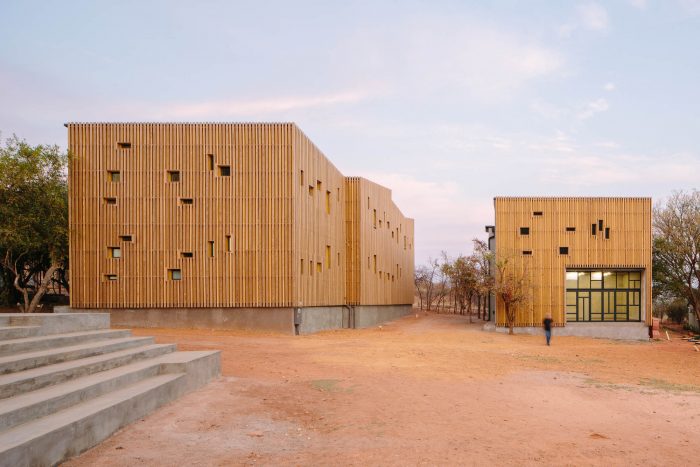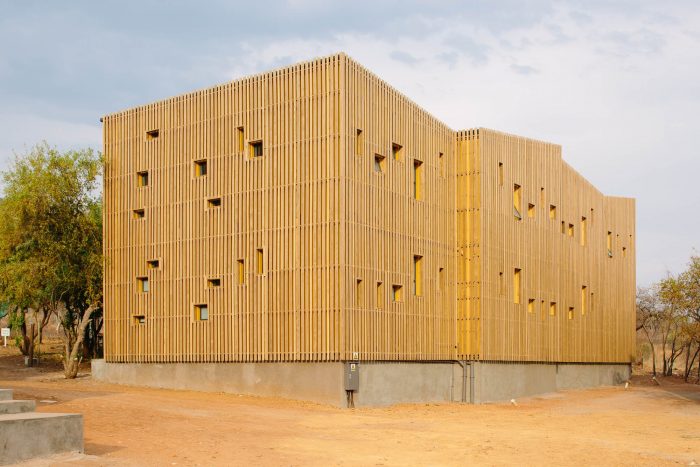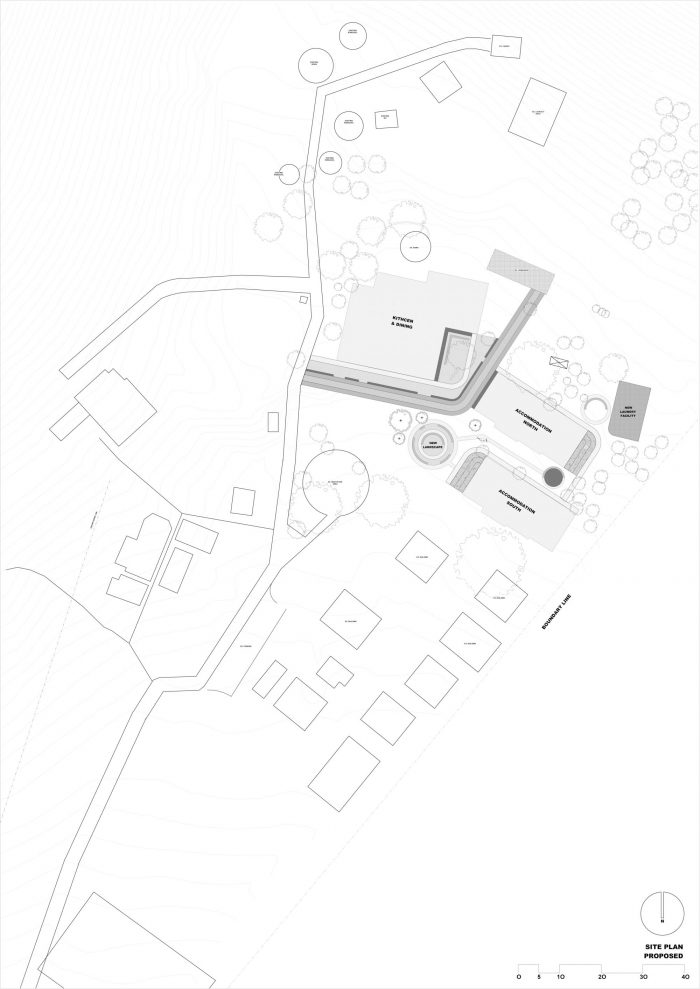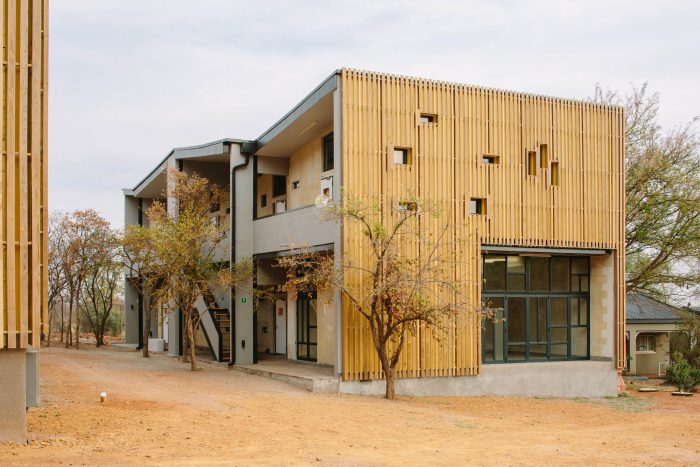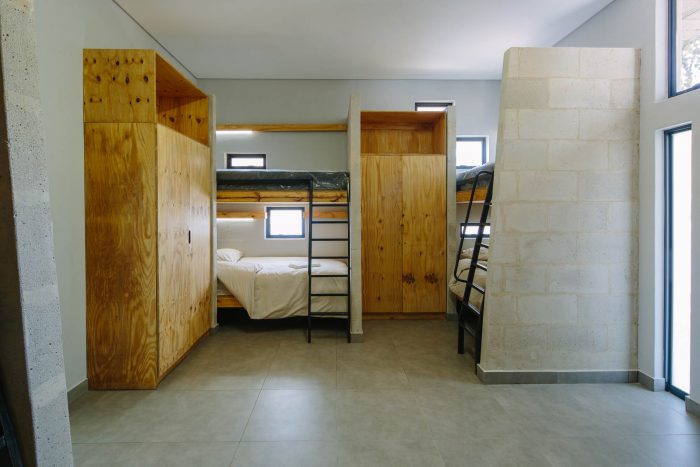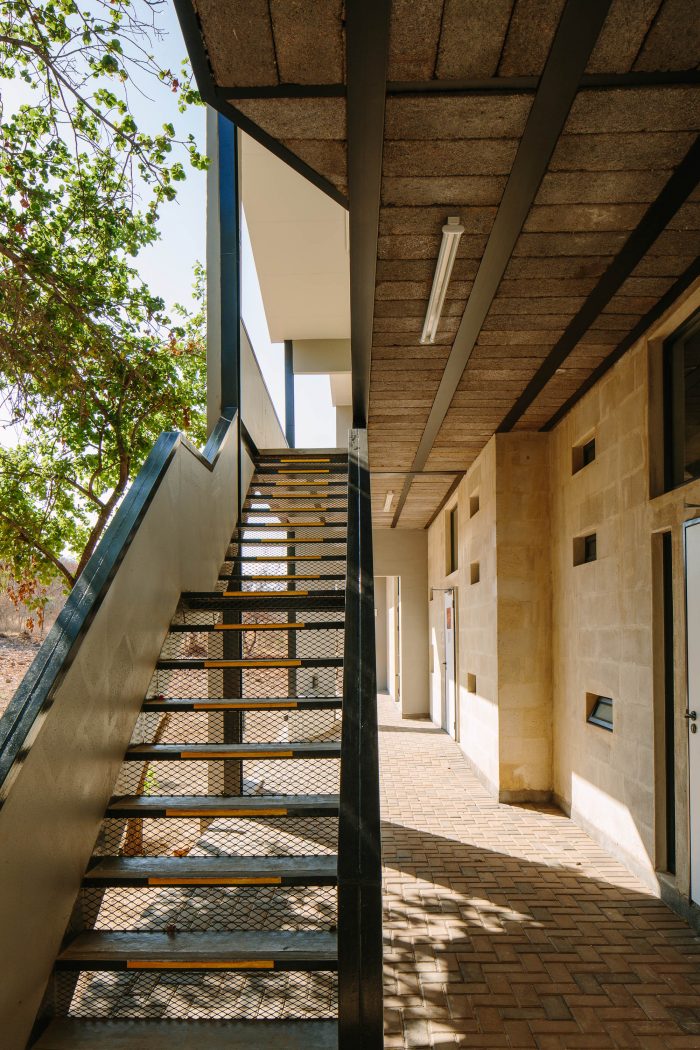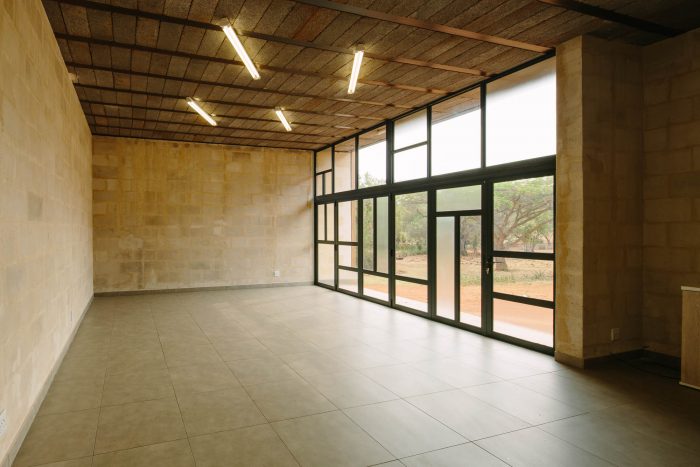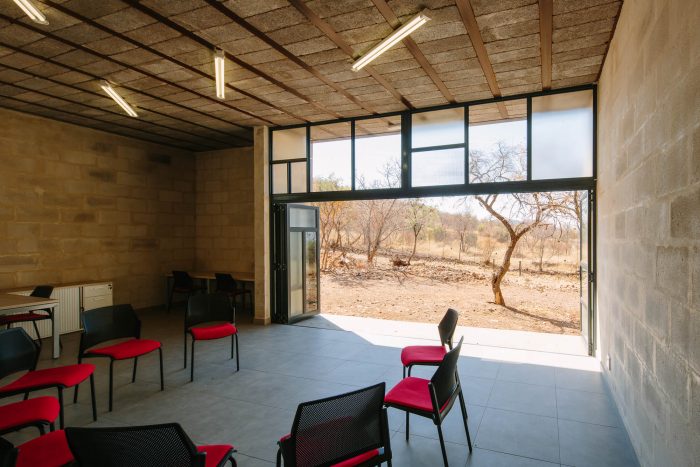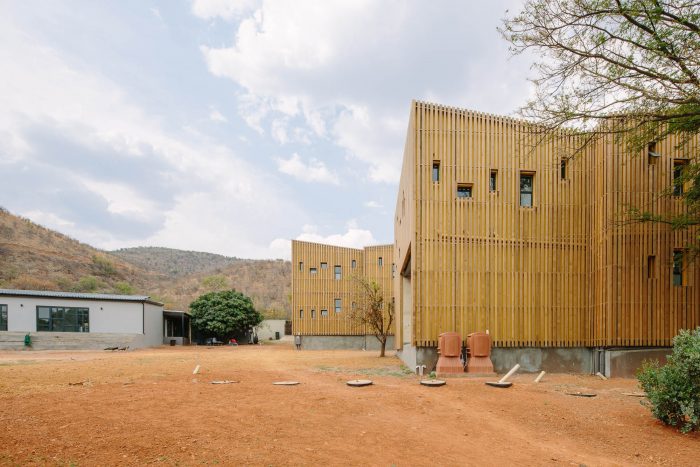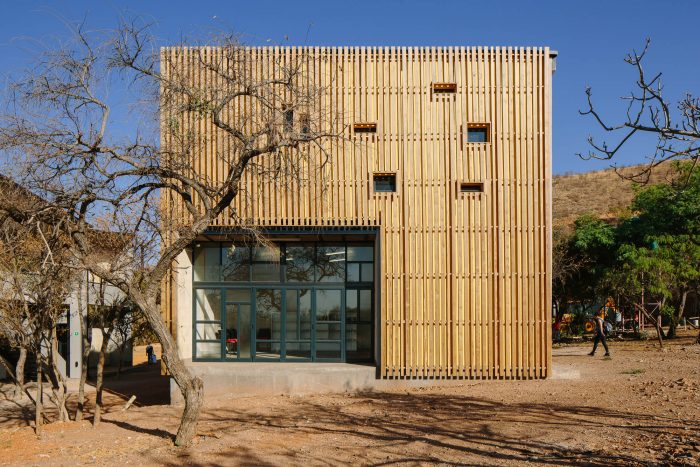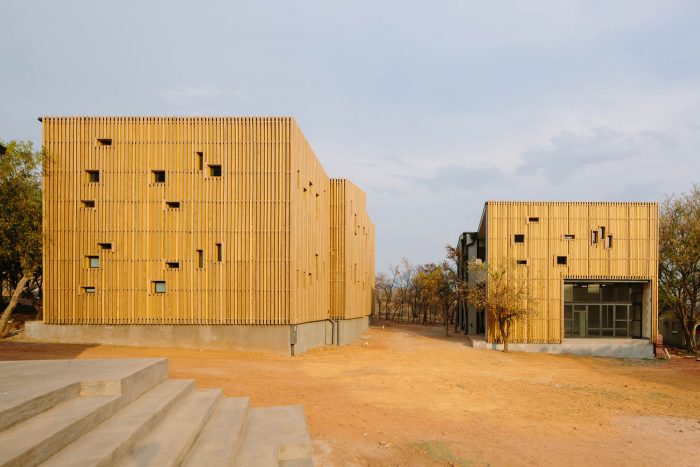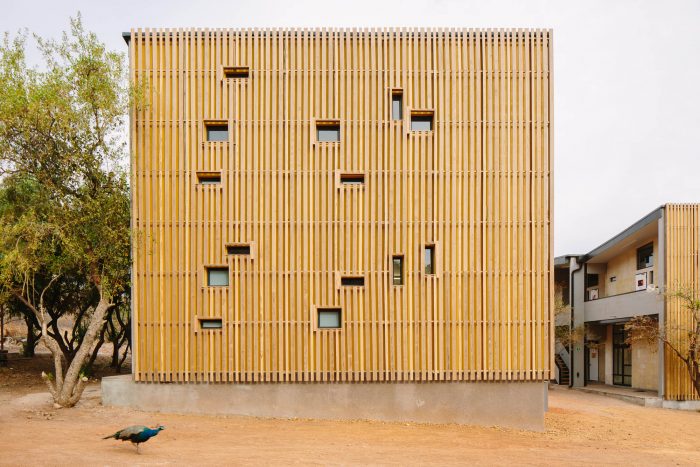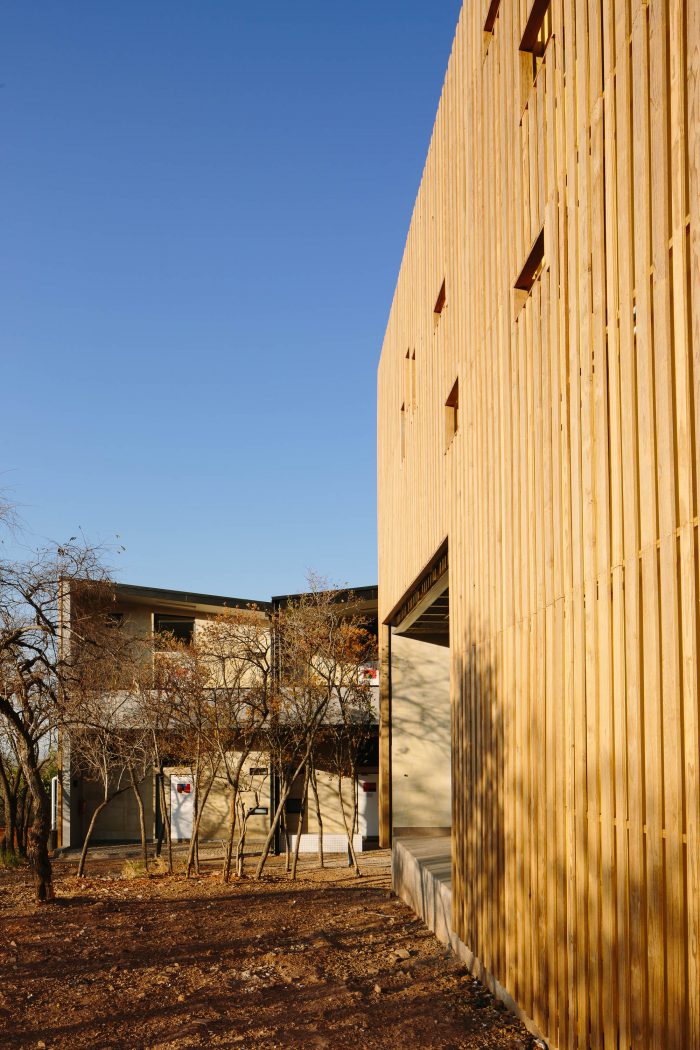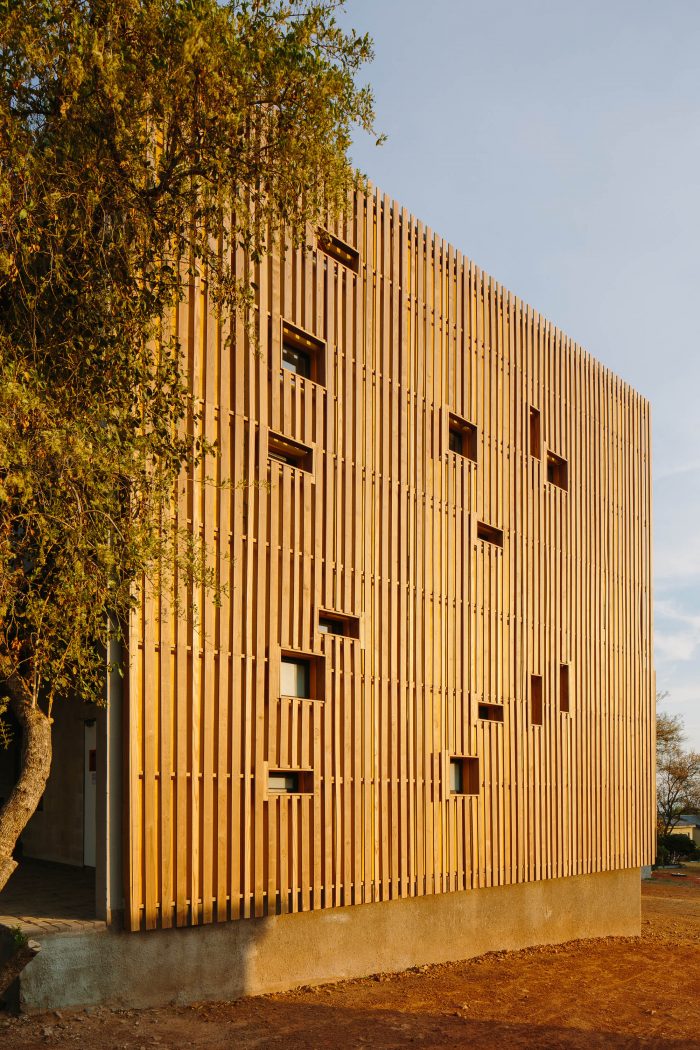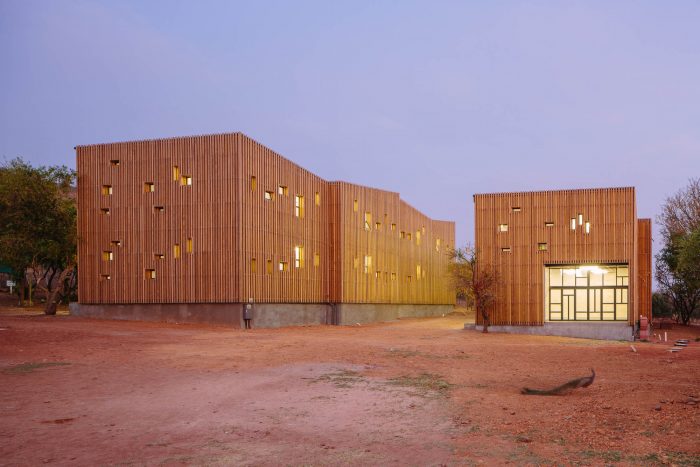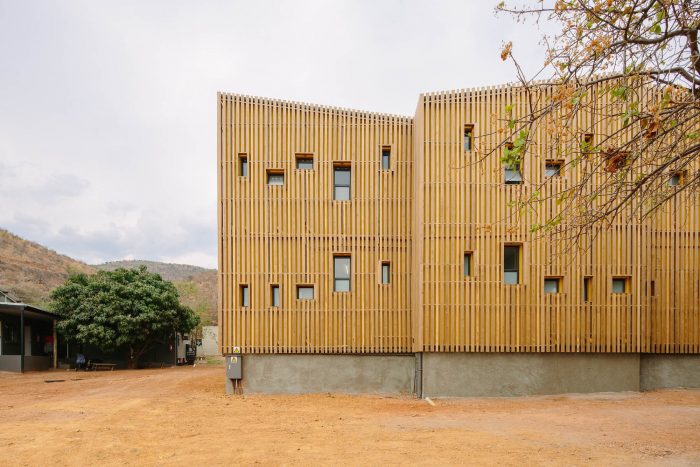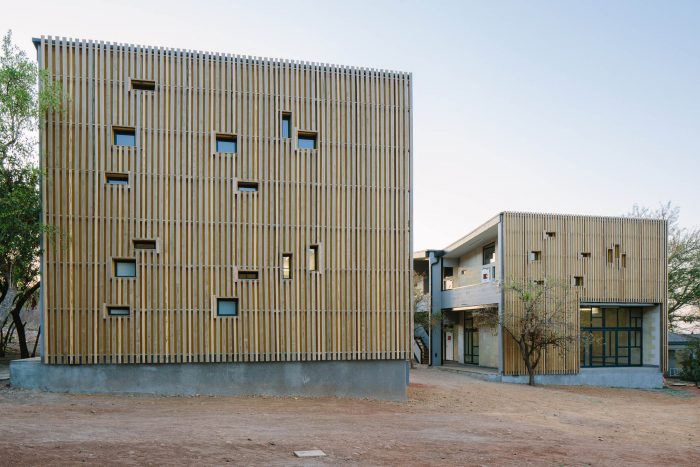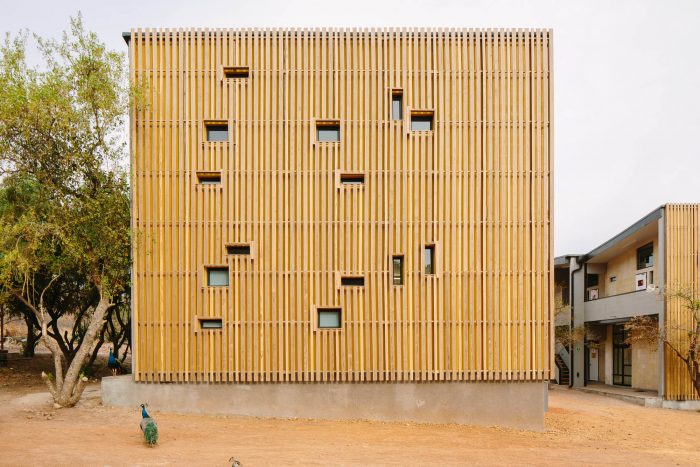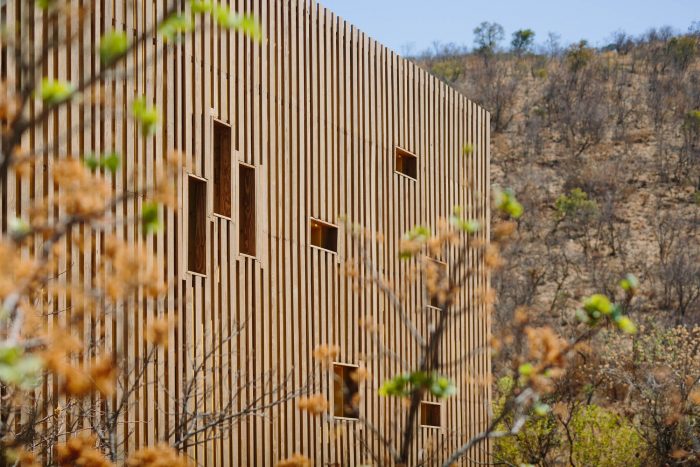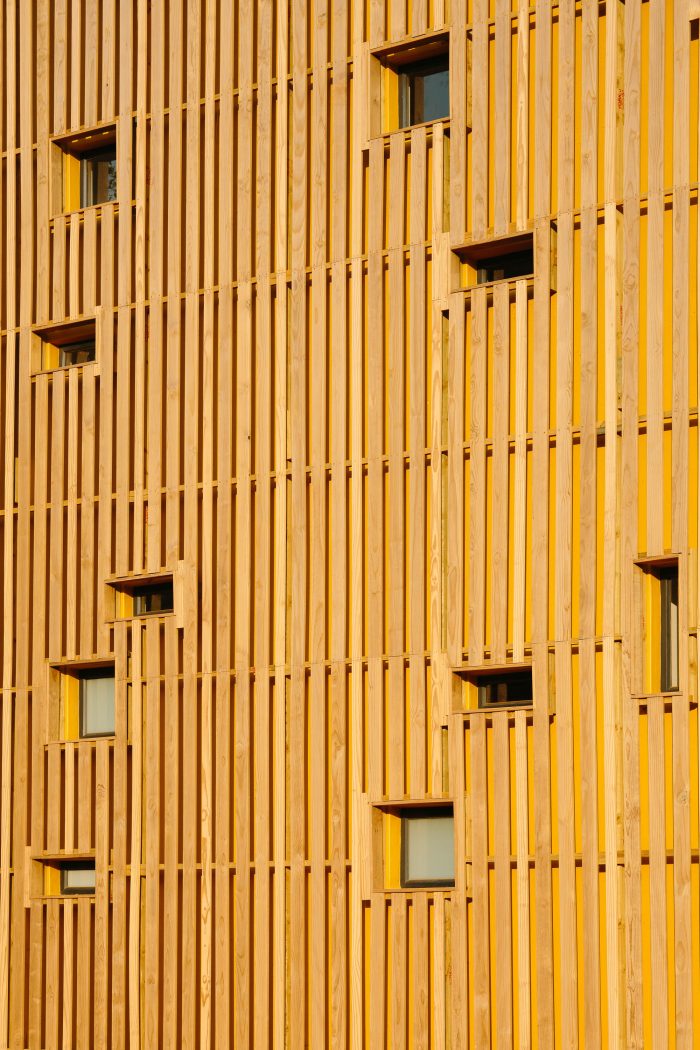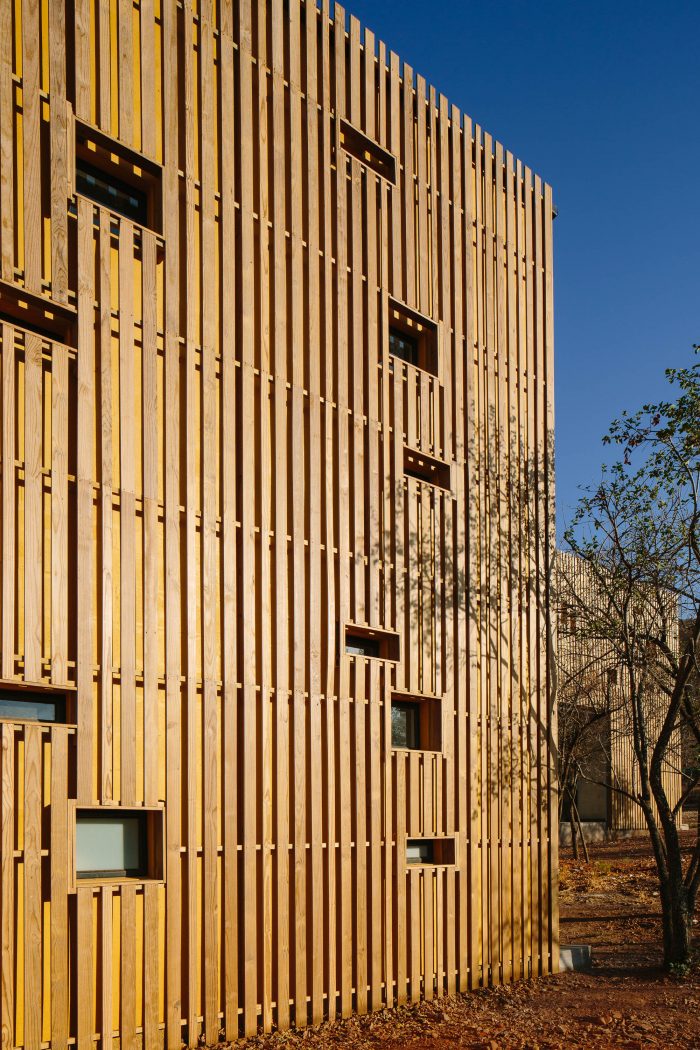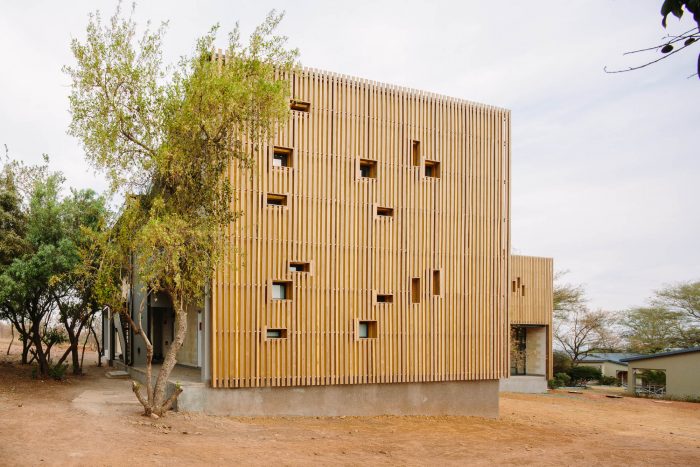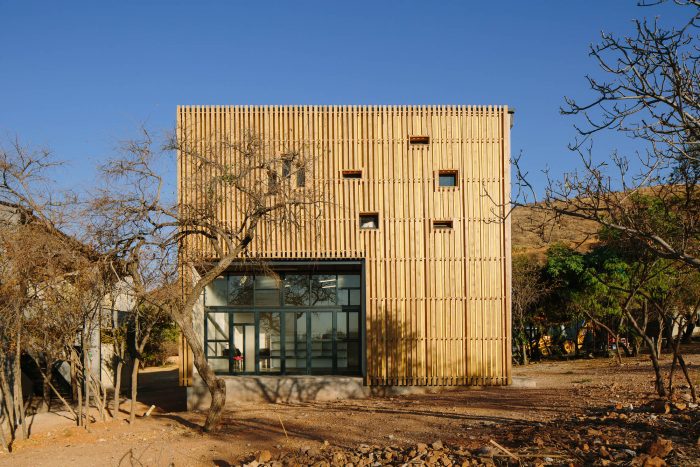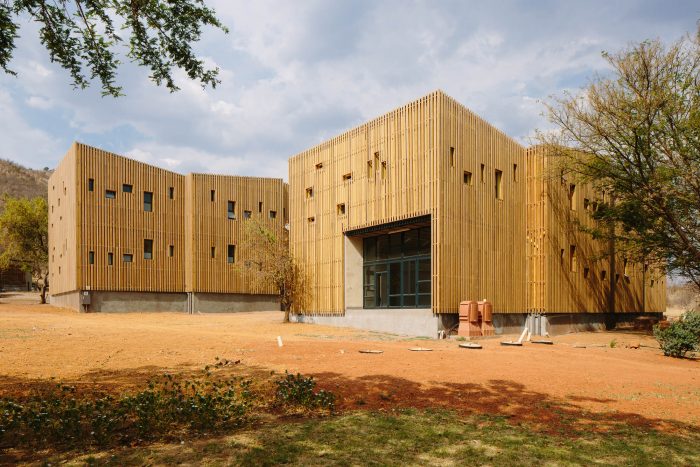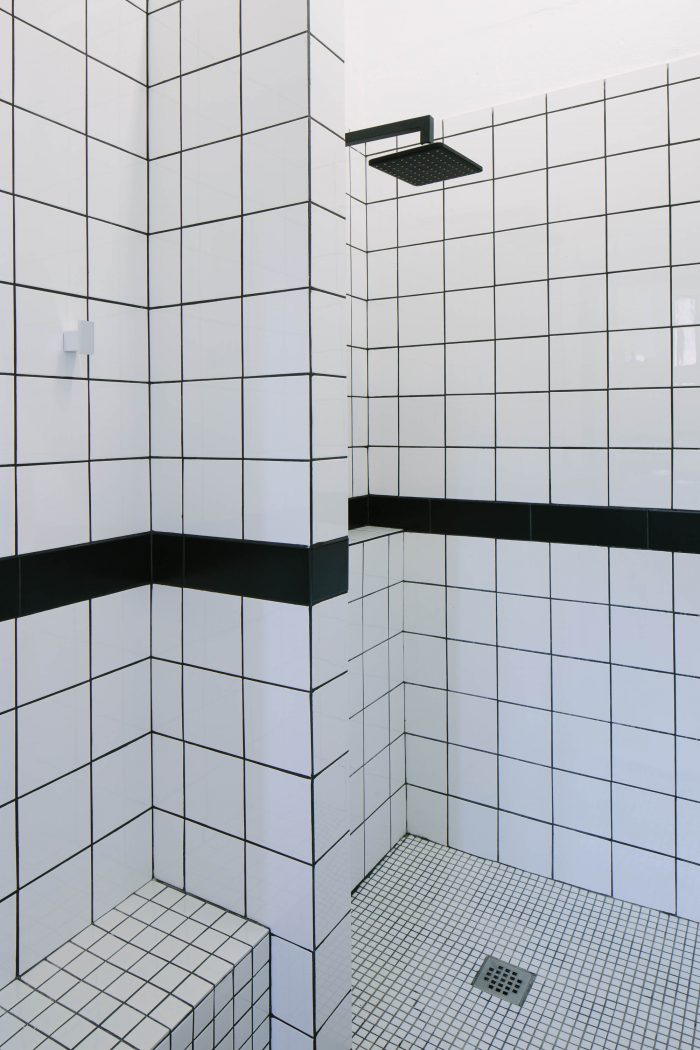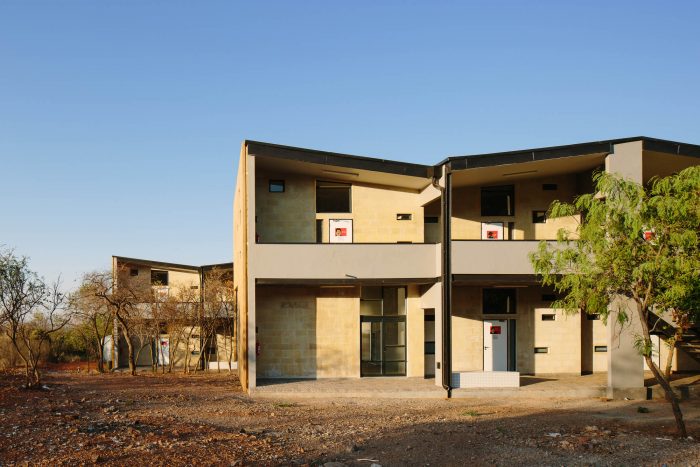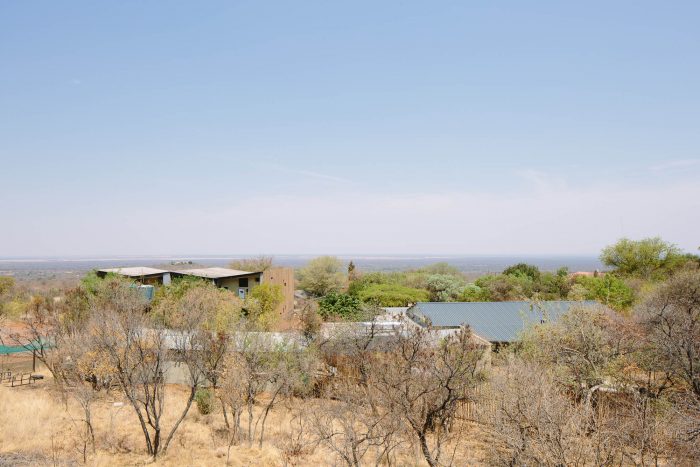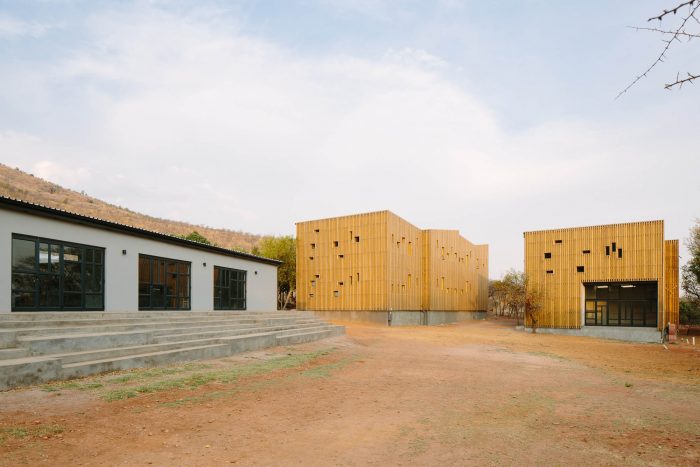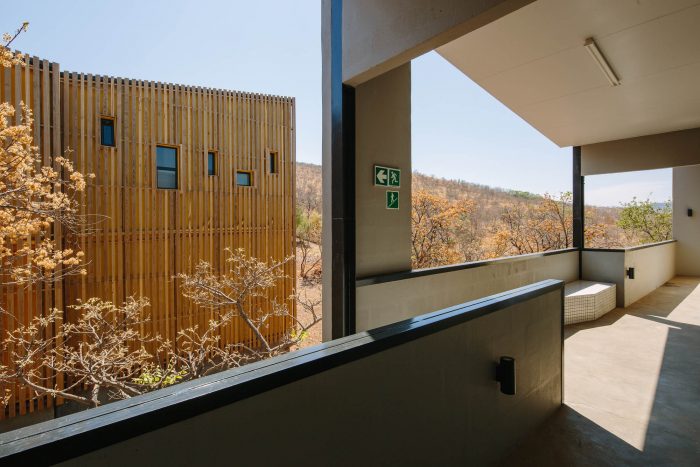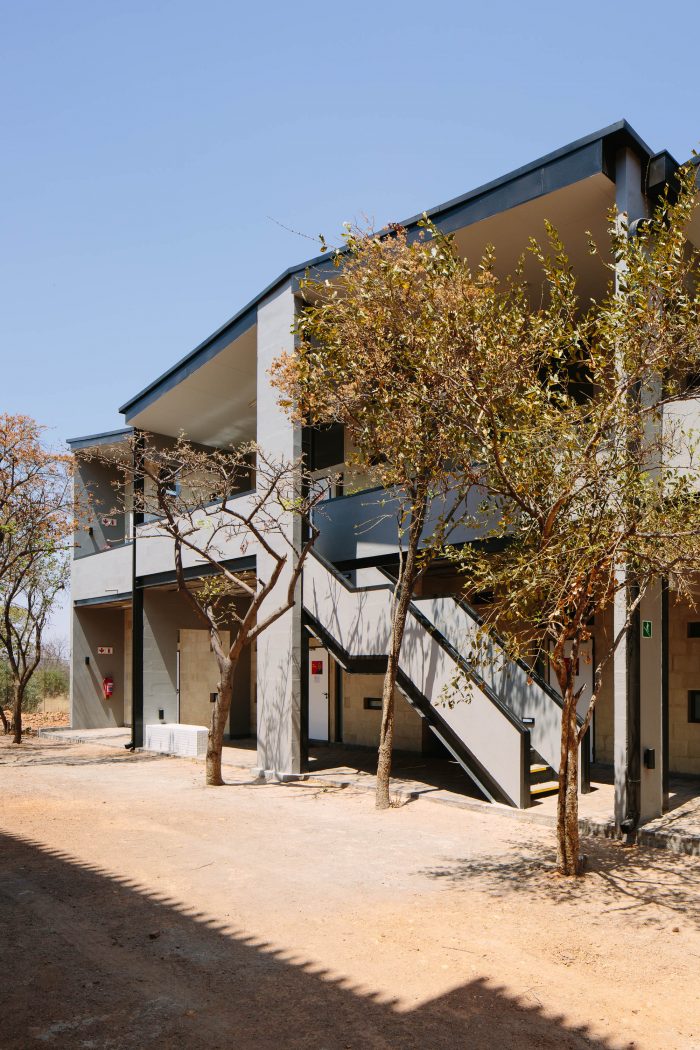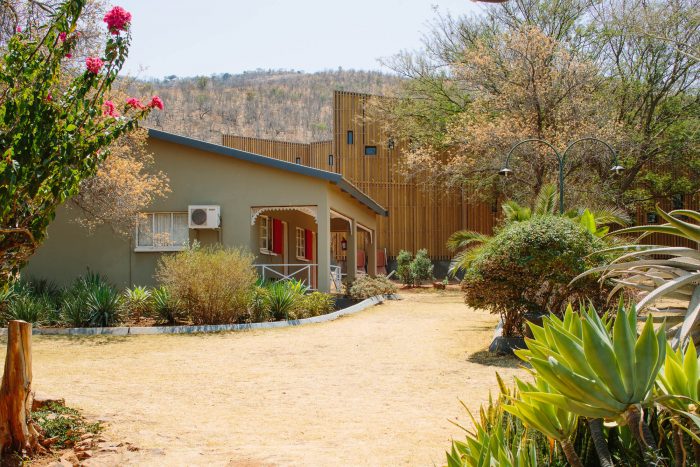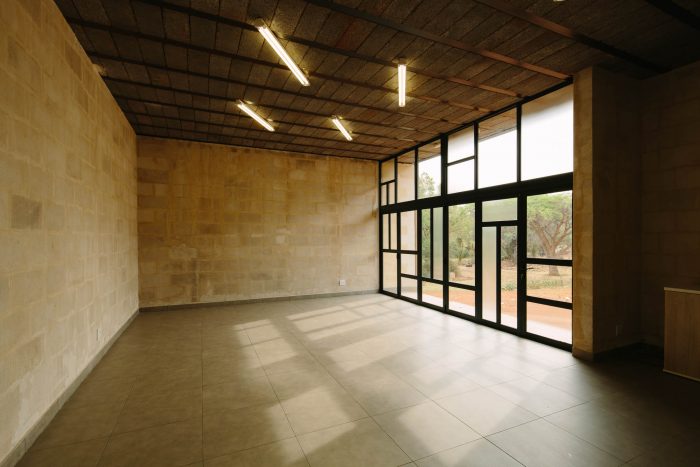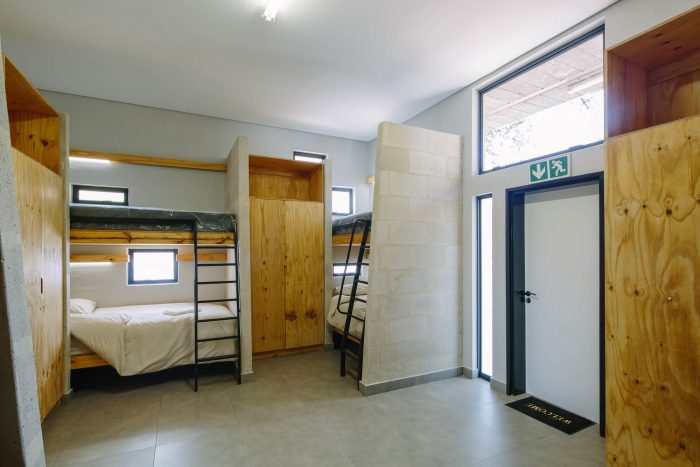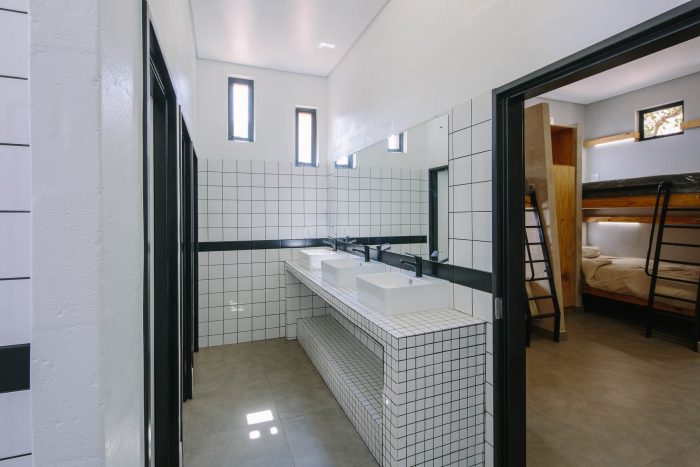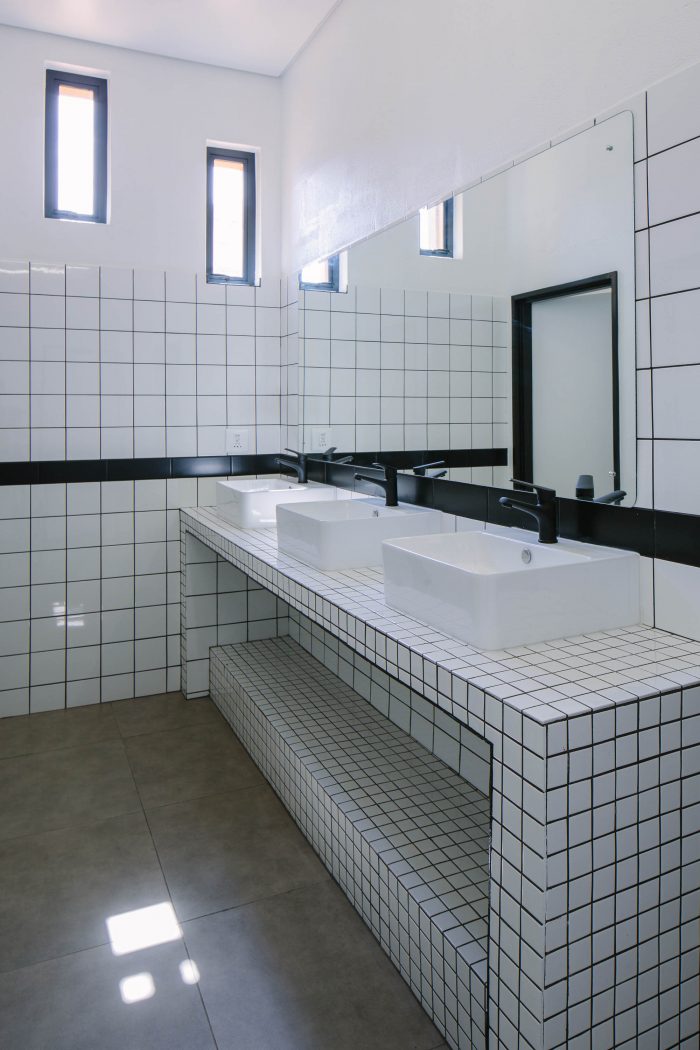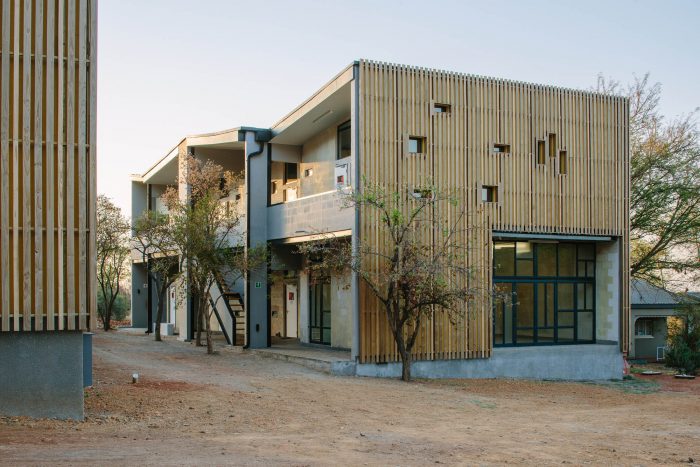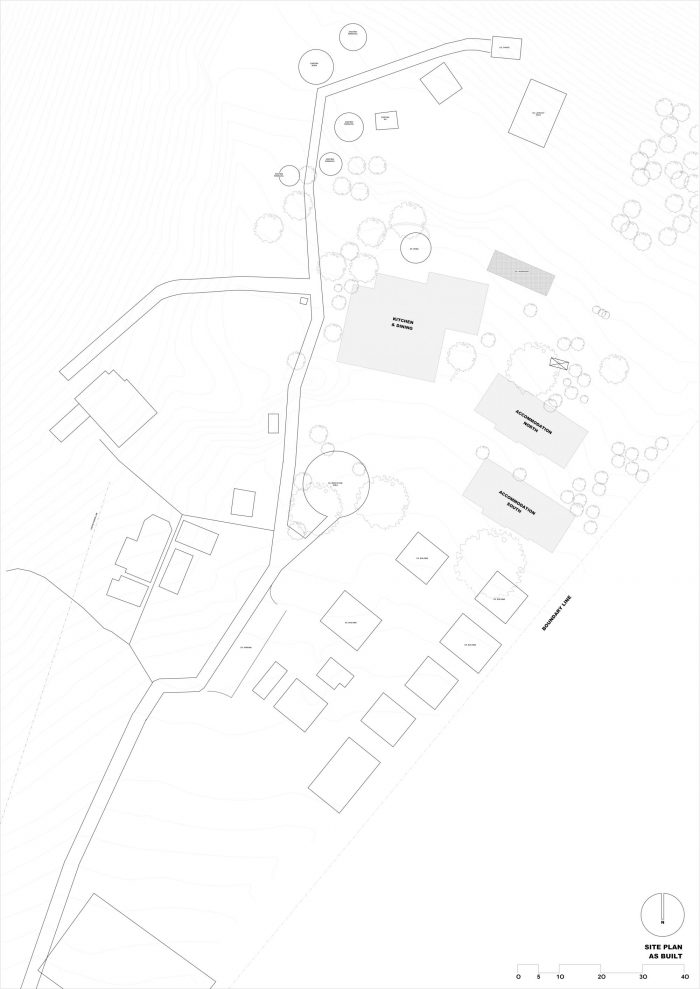Limpopo 青年旅舍项目是由一个专注于青年宣传培训的非营利组织委托的。该组织最初购买了一个不存在的婚礼场地,其中包括小木屋和一个餐厅。我们的任务是建造两座新的宿舍楼,提供120个床位和公共空间,并扩建旧的活动大厅,以满足新增人员的需要。
The Limpopo Youth Hostel project was commissioned by a Non-Profit Organization focused on advocacy training for youth. The organization originally purchased a defunct wedding venue, which included chalets and a dining hall. The brief was to build two new hostel blocks housing 120 beds with communal spaces and to extend the old function hall to cater to the additional people.
这是当地工作室的第一个项目,它试图将公司在城市环境中的一些经验应用于农村社区。任何时候都有超过200人使用这一设施,这使得公共空间和场所建设的基本原则得到了应用。唯一不同的是,这个项目被自然所包围,而不是扩展的城市化。
This is the first project by Local Studio which attempts to apply some of the firm’s experience in urban environments to rural communities. Over 200 people use this facility at any given time allowing for the application of basic principles of public space and place-making. The only difference is that this project is surrounded by nature rather than extended urbanism.
这两座宿舍楼由14个 “吊舱 “组成,每个吊舱有8个学生,都是上下铺,每个学生都通过屏风墙和微妙的照明元素获得一定程度的隐私。大多数双层床也有自己的可开启的窗户,以改善通风,在建筑的三个外墙上形成了不规则的窗户阵列。每栋宿舍楼的底层都有一个公共空间,一个是图书馆,另一个是艺术中心。
The two hostel buildings are made up of 14 ‘pods’ of eight students each, in bunk-beds, with each student being afforded a level of privacy by way of screen walls and subtle lighting elements. Most of the bunk beds also have their own open-able window for improved ventilation, creating the irregular array of windows on three of the building facades. Each hostel building has a communal space at ground floor, one being a library and the other an art center.
这个项目也呈现出与当地工作室通常的材料使用方式不同的一面,以前的材料主要是钢铁、聚碳酸酯和波纹铁等工业材料。在这里,一种新的材料语言已经被开发出来,它具有以前作品的一些短暂性,但对自然更加敏感,并且能够更优雅地老化。该建筑的主要结构是轻质的Hebel混凝土块–这是南非使用这种材料建造的最大的承重结构–而覆层是Rhinowood,一种当地的经过打蜡处理的南非松树。
This project also presents a departure in the way Local Studio normally approaches material usage, having previously focused on industrial materials such as steel, poly-carbonate and corrugated iron. Here, a new material language has been developed which has some of the ephemerality of previous work but with more sensitivity to nature and the capacity to age more gracefully. The building’s primary structure is a lightweight Hebel concrete block – the biggest load-bearing structure built using this material in South Africa – and the cladding is Rhinowood, a local wax treated South African pine.
在南非,使用当地的木材可能是一种挑战,因为它们大多生长过快,不能用于主要结构。在这种情况下,Rhinowood被应用于建筑物的外墙,与Hebel表面的间隔为200毫米。这种效果为外墙遮阳,有利于在林波波的炎热气候中为建筑物提供舒适的内部温度,其温度可以达到40摄氏度。
Working with local timbers in South Africa can be challenging as they are mostly too fast-growing to be used in primary structures. In this case, the Rhinowood was applied to the façade of the building, spaced off the Hebel surface by 200mm. This effect shades the façade, facilitating a comfortable internal temperature for the building in the hot climate of Limpopo, which can reach 40 degrees Celsius.
这些建筑在很大程度上是 “离网 “的。电力仍然部分来自市政供应;然而,已经制定了完全转换为太阳能的计划。住宅区产生的所有黑水都被回收用于灌溉叶菜。建筑物的屋顶是一系列滚动的单沟,旨在模仿并融入场地周围的山丘。当地工作室正在发展中地区稳定地建立一个投资组合。在这个特定的地点,正在计划在不久的将来建造一个公共洗衣房和一个车间。
The buildings are, for the most part, ‘off-grid’. Power is still partially sourced from municipal supply; however plans are in place for a complete conversion to solar power. All black water produced by the residential blocks is recycled for the irrigation of leaf vegetables. The roofs of the building are a rolling series of mono-pitches, which are designed to mimic and blend into the hills surrounding the site. Local Studio is steadily building a portfolio in developing areas. On this particular site a communal laundry and a workshop are being planned to be built in the near future.
Architects: Local Studio
Area: 1350 m²
Year: 2019
Photographs: Tristan Mclaren
Manufacturers: AutoDesk, Hebel, Amecon, Atlas Roofing, Rhinowood
Design Team:Thomas Chapman, Crystal Waddell, Alexia Kolatsis, Lize Wessels
Clients:Pan Africa Today
Structural Engineering:The Structural Workshop
Quantity Surveyor:EM Heyns
General Contractor:AMECON
Civil Engineering:Earthworkshop
City:Bela-Bela
Country:South Africa


